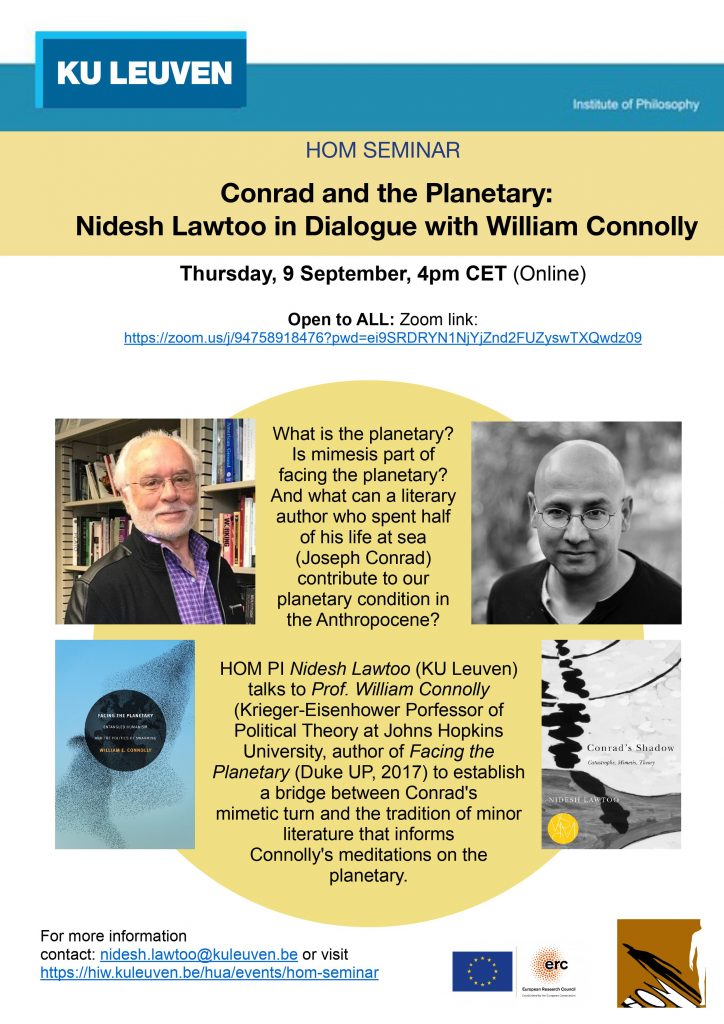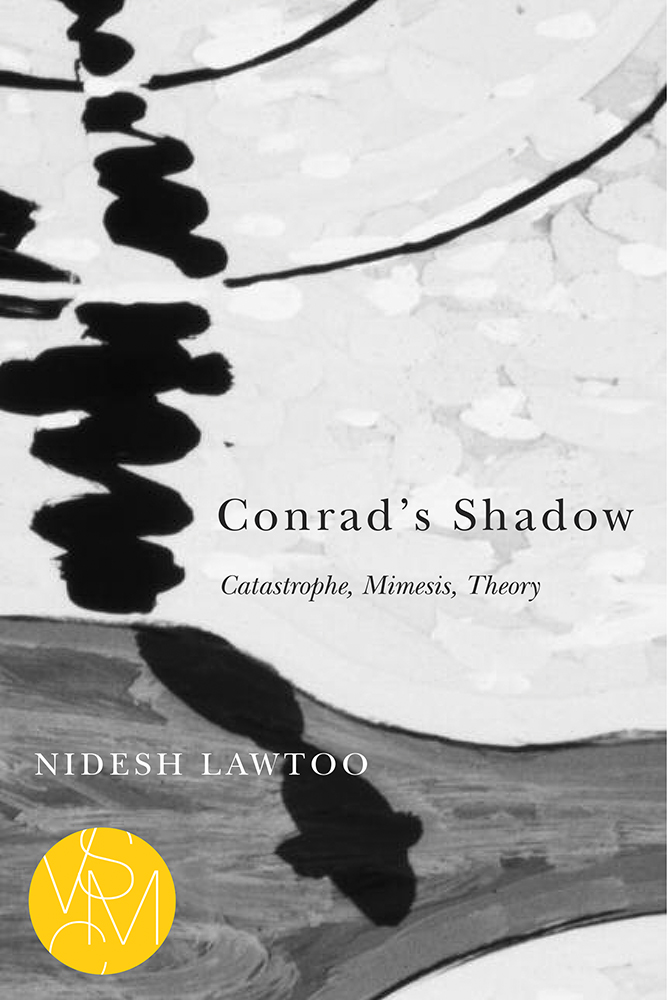What adjustments in established debates about the character of time, culture/nature relations and mimetic processes are suggested when you treat the evental register of time to be a fundamental feature of time itself? Michel Serres, Joseph Conrad and Nidesh Lawtoo are drawn upon to help explore time as a multiplicity, thinking time to be composed of multiple temporalities moving at different speeds and on different trajectories
Tag Archives: Joseph Conrad
Conrad and the Planetary (with William Connolly)

In this online dialogue on Conrad and the Planetary (Sept. 9. 4pm CET) HOM PI Nidesh Lawtoo and political theorist William Connolly join forces to reflect on the role of reading fiction in general and Conrad’s tales of catastrophe in particular, to face planetary challenges in the Anthropocene. More information here.
Mimetic Resonances
Reading Conrad in Catastrophic Times: The Mimetic Turn
In this video presentation for the 2020 Joseph Conrad Society (UK) Annual Meeting shot on the Furka Pass (Swiss Alps), ERC grantee Nidesh Lawtoo introduces the relevance of Conrad’s mimetic turn to face contemporary catastrophes like (new) fascist politics, viral pandemics, and climate change in the Anthropocene. https://www.jstor.org/stable/10.14321…
Conrad’s Shadow Wins Adam Gillon Award
We’re pleased to announce that Nidesh Lawtoo’s book Conrad’s Shadow: Catastrophe, Mimesis, Theory (MSU P, 2016) wins the Adam Gillon Award in Conrad Studies for best book of 2015-2017 (co-winner), a prize delivered by the Joseph Conrad Society of America. You can read the introduction here.

